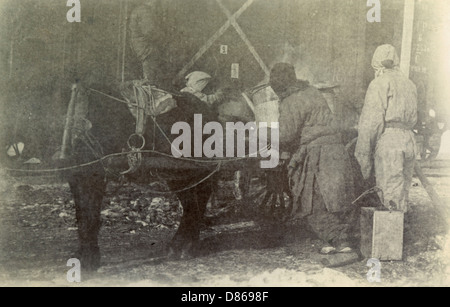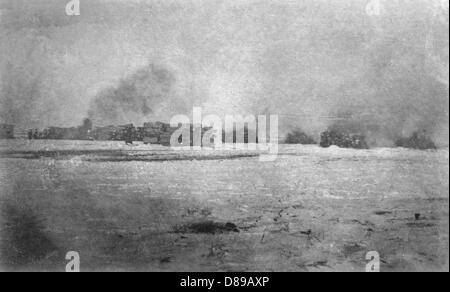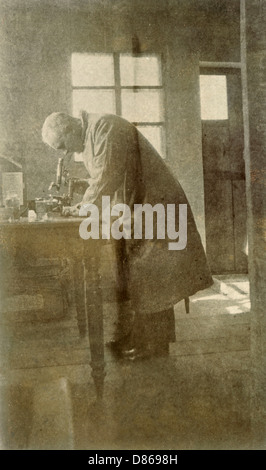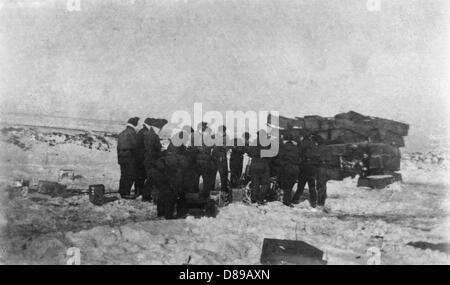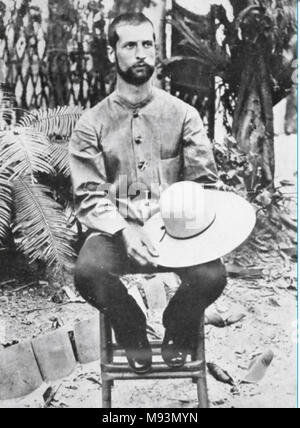
RMM93MYN–ALEXANDRE YERSIN (1863-1943) Franco-Swiss physician and bacteriologist who discovered the bacillus responsible for bubonic plague. Photographed in French Indo-China in 1892 while working as a doctor.
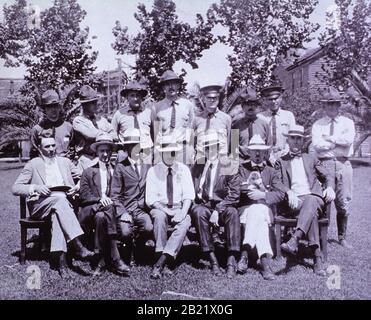
RF2B21X0G–The San Francisco plague of 1900–1904 was an epidemic of bubonic plague centered on San Francisco's Chinatown. It was the first plague epidemic in the continental United States. The epidemic was recognized by medical authorities in March 1900, but its existence was denied for more than two years by California's Governor Henry Gage. His denial was based on business reasons, to protect the reputations of San Francisco and California and to prevent the loss of revenue due to quarantine. The failure to act quickly may have allowed the disease to establish itself among local animal populations.
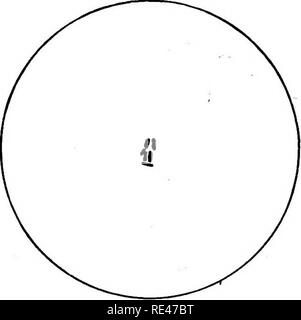
RMRE47BT–. Bacteriology in medicine and surgery. A practical manual for physicians, health officers, and students. Bacteriology. CHAPTEE XXXyi. BUBONIC PLAGUE BACILLUS—YELLOW PEVEE BACILLUS—WHOOPING-COUGH BACILLUS. BACILLUS OF BUBONIC PLAGUE (BaciUus Pestis Bubonicee—Kitasato; Bacterium Pestis). Discovered simultaneously by Kitasato and Yersin (1894) during an epidemic of the bubonic plague in China. It is found in large numbers in the pus from Fig. 82.. Bacillus of bubonic plague. X 1000 diameters. the buboes characteristic of this disease and in the lymphatic glands; more rarely in the internal organ

RF2B21X2N–The San Francisco plague of 1900–1904 was an epidemic of bubonic plague centered on San Francisco's Chinatown. It was the first plague epidemic in the continental United States. The epidemic was recognized by medical authorities in March 1900, but its existence was denied for more than two years by California's Governor Henry Gage. His denial was based on business reasons, to protect the reputations of San Francisco and California and to prevent the loss of revenue due to quarantine. The failure to act quickly may have allowed the disease to establish itself among local animal populations.
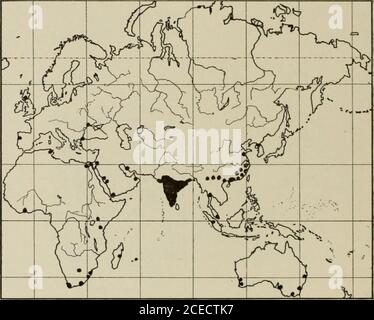
RM2CECTK7–. Guide leaflet. OF PLAGUE.EXTENSION OF THE DISEASE BETWEEN 1200 AND 1450 A. D. These methods of rat suppression have been widely successfulin their application to the control of bubonic plague. The earlyhistory of the present pandemic of plague is precisely like that ofthe one which began in the eleventh century. It started in China,spread to Manchuria in one direction, and killed its six millionsin India. Thence, following the trade routes as of old, plagueinfection has been carried to seaports all over the world. It has AMERICAN MUSEUM GUIDE LEAFLETS passed east to Melbourne, Brisbane, and
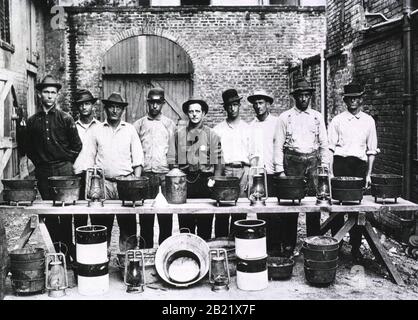
RF2B21X7F–The San Francisco plague of 1900–1904 was an epidemic of bubonic plague centered on San Francisco's Chinatown. It was the first plague epidemic in the continental United States. The epidemic was recognized by medical authorities in March 1900, but its existence was denied for more than two years by California's Governor Henry Gage. His denial was based on business reasons, to protect the reputations of San Francisco and California and to prevent the loss of revenue due to quarantine. The failure to act quickly may have allowed the disease to establish itself among local animal populations.
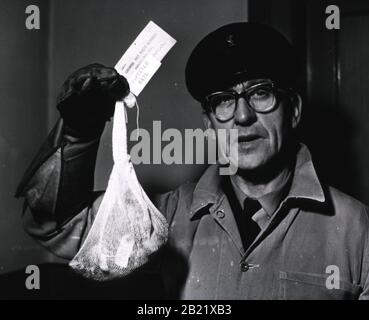
RF2B21XB3–The San Francisco plague of 1900–1904 was an epidemic of bubonic plague centered on San Francisco's Chinatown. It was the first plague epidemic in the continental United States. The epidemic was recognized by medical authorities in March 1900, but its existence was denied for more than two years by California's Governor Henry Gage. His denial was based on business reasons, to protect the reputations of San Francisco and California and to prevent the loss of revenue due to quarantine. The failure to act quickly may have allowed the disease to establish itself among local animal populations.

RF2B21X7N–The San Francisco plague of 1900–1904 was an epidemic of bubonic plague centered on San Francisco's Chinatown. It was the first plague epidemic in the continental United States. The epidemic was recognized by medical authorities in March 1900, but its existence was denied for more than two years by California's Governor Henry Gage. His denial was based on business reasons, to protect the reputations of San Francisco and California and to prevent the loss of revenue due to quarantine. The failure to act quickly may have allowed the disease to establish itself among local animal populations.
